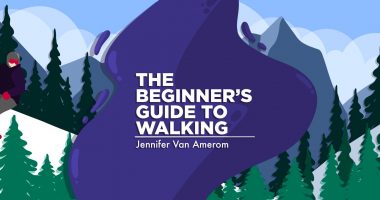Are Roller Coasters Worth the Stress for NMO Patients?

My mom was incredibly angry with me, and rightfully so, the day I lost my retainer. We fed four kids on one income, yet somehow afforded braces and then a retainer, which I was supposed to wear all the time except when eating. I remember playing with the retainer in my mouth, an annoying habit I developed to pass time.
I’ve always been a thrill-seeker, even as a kid. My cousins and I would pile into my uncle’s giant passenger van and make the 1.5-hour drive to Canada’s Wonderland, an amusement park just outside Toronto. My favorite roller coaster has always been the Bat, a ride that pulls the cars up, only to release them into a loop, corkscrew, and then another loop, before pulling them back up toward the sky. Then, when you’re least expecting it, the cars drop again, in the same pattern, only backward. Somewhere on the Bat, I screamed and lost my retainer, never to be seen again.
Last weekend, my husband, Mike, and I took our daughter, Sophie, to the park. She is definitely our kid because she adores thrills as much as we do. As we stood at the entrance of the Bat, I wondered if my 9-year-old was ready, but she didn’t miss a beat. Then I hesitated, because I’m not sure I should be riding roller coasters anymore.
I conceded because I’d never miss Sophie’s first big roller coaster. Riding together was very special.
Should neuromyelitis optica (NMO) patients ride roller coasters?
We know that people with heart conditions should not ride coasters. Heart rates increase dramatically during and after any ride. But so do emotional stress levels, which can negatively affect anyone’s body. When we put our bodies through stress or excitement, such as a coaster ride, we increase production of the hormone cortisol.
Our bodies are hard-wired with an autonomic nervous system (ANS), which controls our automatic functions. The ANS includes the parasympathetic nervous system, which relaxes our body, and the sympathetic nervous system, which controls our fight-or-flight mode. During a coaster ride, the sympathetic nervous system arouses or excites our body. The way we handle such excitement depends on our individual bodies.
While most NMO patients have lesions on their spinal cords, some of us also have lesions on our brain or brainstem, like those who have multiple sclerosis. It’s reasonable to be concerned about the impact a ride might have on our bodies.
An article published in 2000 in the journal Neurology noted that coaster lovers are at an increased risk for a type of brain injury called subdural hematoma, which can result in unrelieved headaches — and this is for the average healthy person.
However, this concern has been disputed. An article published in 2009 in The American Journal of Forensic Medicine and Pathology noted that roller coaster rides pose a very low risk for traumatic brain injury. In another article published in 2017 in the Journal of Neurotrauma, authors shared that, “Brain strain rates during roller coaster rides were similar to those in running, and lower than those in soccer headers.”
What happens to the central nervous system (CNS) during a roller coaster ride?
The CNS consists of the brain, the center of our thoughts and interpreter of sensory information, and the spinal cord, which operates like the superhighway of communication between the body and the brain.
Because lesions on our spines disrupt that communication, do some NMO patients miss out on certain sensations while riding a coaster? For NMO patients who do not suffer from permanent paralysis, would we experience something similar to temporary paralysis on roller coasters? It certainly takes me a moment to regain sensation in my legs once the ride ends.
I wonder if coasters are worth the stress we put our CNS through. The limited communication from the spinal cord forces our bodies to rely more on the brain for information about the ride. How much stress is too much?
It’s important to enjoy the small wins in life.
With no concrete evidence that suggests NMO patients shouldn’t ride roller coasters, there are quite a few neurologically affected patients who ride them anyway, and I’m one of them. A quick Google search reveals numerous blogs and posts from patients who have made the decision to go out and enjoy life. I’m not suggesting we all behave recklessly, but that we know our physical limits and have fun within them.
Disease takes a lot from our lives, so getting to enjoy a day at an amusement park, especially while sharing a moment with our daughter, is a win.
Note: Neuromyelitis News is strictly a news and information website about the disease. It does not provide medical advice, diagnosis, or treatment. This content is not intended to be a substitute for professional medical advice, diagnosis, or treatment. Always seek the advice of your physician or other qualified health providers with any questions you may have regarding a medical condition. Never disregard professional medical advice or delay in seeking it because of something you have read on this website. The opinions expressed in this column are not those of Neuromyelitis News or its parent company, BioNews, and are intended to spark discussion about issues pertaining to neuromyelitis optica spectrum disorder (NMOSD).







Comments